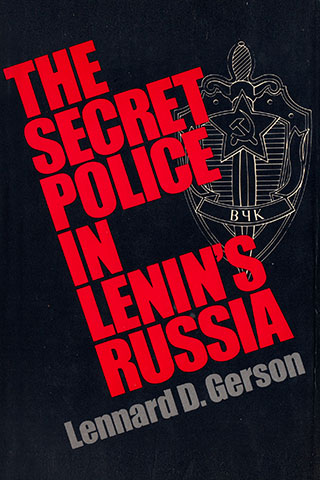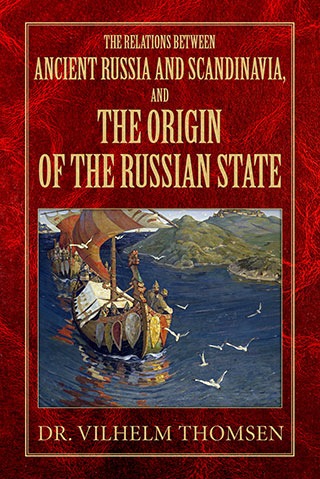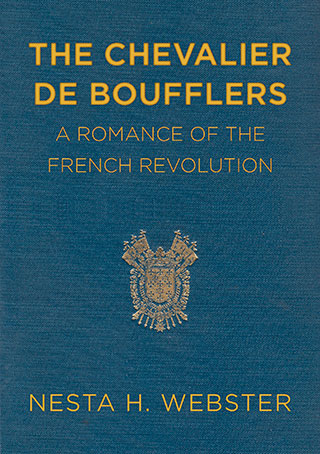Stolen Elections
America has a long and fascinating history
of electoral surprises & subterfuge

The 2016 presidential primaries were eye-opening. Donald Trump was victorious over a plethora of Republican candidates including Texas Senator Ted Cruz, Ohio Gov. John Kasich and former Florida Gov. Jeb Bush, who was the clear establishment favorite to win when the process started months and months ago. But conservative voters came out in droves to vote for the billionaire political maverick and set the political establishment on its head.
As we write this, there are scores of politicians on both sides of the aisle, Democrat and Republican — praying Trump will lose — or be kept from running — rather than run any risk of seeing their comfortable spoils system threatened by someone who ever whiffs of “outsider.”
So if the Powers That Be really wanted to stop a candidate they feared, just how could they do it? Back room dealing? Blackmail? Fake rumors? Financial secrets? Assassination? A brokered convention? Why not?
What is a Brokered Convention?
If the first vote of convention delegates occurs, and no candidate receives a majority of the delegates’ votes, the convention is considered brokered. Before the U.S. began holding primary elections, however, political party elections in America were often brokered.
Take the case of renowned lawyer John W. Davis. He finally emerged the victor of the brokered 1924 Democratic National Convention (known forever after as the “Klanbake”) — after 103 ballots. Frontrunners Alfred E. Smith and William G. McAdoo lost to this surprise compromise candidate because their factions could not resolve differences over prohibition and other issues. (As an historical aside, in the early 1930s, Davis was accused by Marine Corps Maj. Gen. Smedley Butler of plotting to overthrow President Franklin D. Roosevelt.)
As Victor Thorn informed us in the May/June 2016 TBR, the last brokered convention for the Republican Party was held back in 1952. Robert Taft held more delegates going into the election than Dwight Eisenhower, but “Ike” quickly became the victor by challenging some of Taft’s delegates.[1]
But Adlai Stevenson was also a brokered candidate the same year for the Democrats.
Vote “Irregularities”
As recently as 2000, George W. Bush eked out an election victory after several recounts in the state of Florida, amid allegations of trickery, this despite the fact that Al Gore had won more total votes. Additionally, an election worker admitted to tampering with the electronic vote count in favor of Bush in Ohio, a must-win state for Dubya, in 2004.
Vote Shenanigans in U.S. History
The election of 1800 found the House of Representatives having to break a tie with Thomas Jefferson and Aaron Burr. Three years later, Burr, as sitting vice president, killed Alexander Hamilton (a Federalist and political enemy) in their infamous duel.[2]
The House again had to choose the president in the year 1824. John Quincy Adams won the election over Andrew Jackson after some delegate wheeling and dealing with Henry Clay (who Adams rewarded with the position of secretary of state, an event still referred to as “the corrupt bargain” by many historians). Clay, who despised Jackson, agreed to get his supporters to throw their votes to Adams, ostensibly in return for a lucrative political appointment. In those days, the secretary of state, as opposed to the vice president, was looked upon as the man to be groomed as the next president.[3]
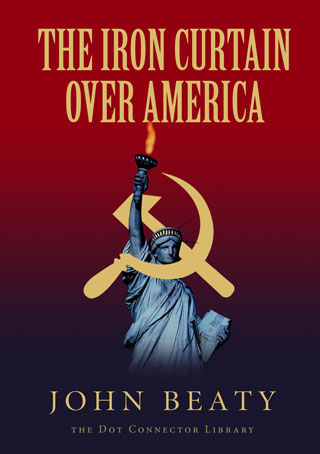 The election of 1860 was a tumultuous one. Radical abolitionists controlled the Republican Party. The Democratic Party was split between Stephen Douglas (a Northerner) and sitting Vice President John Breckinridge (a Southerner from Kentucky). If that wasn’t complicating things enough, the election of 1860 saw a third-party candidate enter the race. John Bell (a moderate from Tennessee) represented the Constitutional-Union Party. Douglas took only Missouri for the Democrats, Breckinridge took the South for the Democrats, and Bell took Tennessee, Kentucky and Virginia. Thus, Abraham Lincoln won the election of 1860, despite garnering only 40% of the popular vote.[4]
The election of 1860 was a tumultuous one. Radical abolitionists controlled the Republican Party. The Democratic Party was split between Stephen Douglas (a Northerner) and sitting Vice President John Breckinridge (a Southerner from Kentucky). If that wasn’t complicating things enough, the election of 1860 saw a third-party candidate enter the race. John Bell (a moderate from Tennessee) represented the Constitutional-Union Party. Douglas took only Missouri for the Democrats, Breckinridge took the South for the Democrats, and Bell took Tennessee, Kentucky and Virginia. Thus, Abraham Lincoln won the election of 1860, despite garnering only 40% of the popular vote.[4]
A little-known fact about the Republican convention of 1860 is that it was a “brokered” convention. Although Lincoln publicly was opposed to making “deals” for delegates he found a way to back-channel the effort and defeat his opponent, William H. Seward.
For the Republicans, it was essential to win in the Midwest. Lincoln was well known in the region, having made a name for himself in Illinois as a powerful and inspirational abolitionist speaker and debater.
According to Wikipedia:
[Lincoln] had the support of the Illinois and Indiana delegations before the convention, and was the strongest candidate other than Seward.
Nonetheless, Seward’s prestige appeared likely to carry him to the nomination.
Lincoln was represented at the convention by his friends Leonard Swett, Ward Hill Lamon and David Davis. During the night of May 17–18, they worked frantically to win anti-Seward delegates for Lincoln.
They showed that Lincoln already had the most support after Seward, which persuaded some. They also made a deal with Simon Cameron of Pennsylvania, who recognized that he had no chance of winning the nomination himself. Cameron controlled the Pennsylvania delegation, and he offered to trade his support for the promise of a cabinet position for himself and control of federal patronage in Pennsylvania. Lincoln did not want to make any such deal; from Springfield, he telegraphed to Davis “I authorize no bargains and will be bound by none.” Despite this restriction, Davis reached an understanding with Cameron, which eventually led to Cameron’s appointment as secretary of war.[5]
The next day (May 18), when voting for the nomination began, Seward led on the first ballot with Lincoln a distant second. But on the second ballot, the Pennsylvania delegation switched to Lincoln, putting him in a near-tie with Seward. On the third ballot many additional delegates switched to Lincoln, and he won the party’s nomination.
What is not revealed in the Wikipedia article, however, is just how Lincoln’s people convinced so many Seward supporters to flip. Evidently, Lincoln’s campaign manager forged and printed hundreds of admission tickets before the convention was to begin and handed them out to Lincoln supporters. When Seward’s people arrived in the morning after a night of greasing palms and buying drinks for delegates, they found the convention hall packed solid with Lincoln supporters.
Those who believed Seward was a shoo-in were surprised to see that the crowd was so pro-Lincoln. Concerned if they voted against the seemingly popular Lincoln they might be aced out of lucrative political appointments, they quickly flip-flopped to “Not-So-Honest” Abe.
But that was not the end of Lincoln’s electoral hanky panky.
The Real Lincoln, written by Charles L.C. Minor and first published in 1904, describes in detail the election fraud committed by Lincoln in 1864. Some of the violations detailed by Minor include the following facts:
The management of the election was committed in large measure to Seward, secretary of state, and to Stanton, secretary of war; the exercise of despotic power by both of whom has been described. Even a canvass for the presidency by Democrats was difficult, for an order of the War Department had made criticism of the administration treason, triable by court-martial.[6]
Lincoln considered Treasury Secretary Salmon P. Chase his bitter enemy — and stiff competition for his reelection in 1864 — so he bought him off by offering him the job as chief justice of the Supreme Court of the United States.
Minor writes:
Lincoln regarded Chase as his bitter and malignant enemy during all that period cannot be doubted; that it was not pretended that Chase had any claim to the chief justice-ship on the grounds of eminent legal attainments or political fidelity.[7]
Gen. Benjamin F. Butler was sent to New York to occupy the city in anticipation of a riot that was to be far larger and better organized than the draft riots of 1863, which would give the former top general of the Army of the Potomac, George B. McClellan, the victory in the city, jeopardizing Lincoln’s 1864 chances of reelection. Of this Minor writes how the riots of 1863 were put down:
Butler had before described how he put down those draft riots, as follows: Ten thousand infantry and three batteries of artillery, picked troops, including regulars, were sent to New York City from the Army of the Potomac.[8]
The creation of fictitious states also enabled Abraham Lincoln to be reelected in 1864. Minor uses the words of the Honorable H. Winter Davis to describe this process:
It is not surprising, Mr. Speaker, that the president, having failed to sign the bill passed by the whole body of his supporters by both houses, at the last session of Congress, and having assigned, under pressure of events, but without authority of law, reasons, good or bad, first refusing to allow the bill to become a law, and therefore usurping power to execute parts of it as law, while he discarded other parts, which interfered with possible electoral votes, those arguments should be found satisfactory to some minds prone to act upon the winking of authority.[9]
Describing the “representatives” in Louisiana, Winter writes:
Whose representatives are they? … In Louisiana they are the representatives of the bayonets of Gen. Banks and the will of the president, as expressed in his secret letter to Gen. Banks.[10]
Winter called Virginia’s “loyal” government as “a fringe along the Potomac and the sea which has just sent two senators to the other house, and has ratified the amendment of the Constitution of the United States abolishing slavery in all the rest of Virginia, where not one of them dares to put his pretty person.”[11]
There was at least one time in American history in which a political back room deal actually benefited the country. Lincoln’s corrupt policies not only continued after his death, they actually became much more cruel, corrupt and fraudulent during the era of Reconstruction than even Lincoln had ever desired.
A “CNN Politics” website article details the fortuitous bargain that got former Union Gen. Rutherford B. Hayes elected and the ball rolling on the removal of Union troops from the occupied South:
Democrat Samuel Tilden had beaten Republican Rutherford Hayes. He snared a quarter-million more ballots in the popular vote, and he had 19 more votes in the Electoral College.
Problem was, Tilden was one Electoral College vote away from a majority of 185 votes, and four states, comprising a total of 20 votes — Florida, Louisiana, South Carolina and Oregon — were disputing the results. In the Southern states, each party was accusing the other of fraud.
With no precedent to lean on, the two parties agreed to establish a 15-member commission made up of seven Republicans, seven Democrats and an independent. The independent, Supreme Court Justice David Davis, however, was unexpectedly selected by the Illinois Legislature to serve in the U.S. Senate. He was replaced by Justice Joseph Bradley, a diehard Republican who would cast every vote for Hayes, providing him the 20 votes he needed for a majority.[12]
Democrats initially threatened to block the decision, but, in a backroom deal, they agreed to drop their opposition if Hayes, among other provisions, removed federal troops that had been marauding across the South during the period known as Reconstruction.
Subterfuge in the 20th Century
As America moved into the 20th century and began its emergence as an international superpower, the ruling elite felt compelled to expand their repertoire of electoral manipulation techniques. They never completely abandoned the practice of stuffing ballot boxes and pulling off backroom shenanigans. Instead, with new technologies at their disposal, the hidden cartel merely had a more sophisticated arsenal from which to ensure that the man they wanted in the Oval Office got there.
Quite possibly one of the most transformative elections in this country’s history transpired in 1912. Specifically, Progressivism reared its ugly head, and those atop the global control pyramid realized that to create a centralized banking structure and implement a federal income tax, they needed to recruit one of their own.
This bought-and-controlled marionette arrived in the form of Woodrow Wilson and his puppetmaster Col. Edward M. House. But forcing Wilson into this role didn’t come easy. At the Democratic Party’s 1912 convention, it took an astounding 46 votes before Wilson was slated as the nominee. Not only had Wilson previously been Princeton University president and New Jersey governor, 1912 also saw women and Blacks voting for the first time. All of these factors leaned heavily in the favor of Wilson-style liberalism, and soon America found itself burdened by a progressive income tax, the Federal Reserve and its entrance into World War I.
Truman, Johnson, Kennedy
The 1948 presidential election pitted Franklin D. Roosevelt’s WWII successor, the incumbent Democrat Harry Truman, against New York’s Republican governor, Thomas Dewey.
What made this contest so interesting was the widespread use of national polling data for the first time. It goes without saying that polls have historically been utilized as a means of conditioning the populace into accepting the favored candidate. Here’s where it gets really interesting.
Because George Gallup’s organization placed Dewey so far in front of the unpopular Truman, Dewey was lulled into a false sense of security and dramatically halted his campaigning during the final two months leading up to the election. As a result of this polling razzle-dazzle, a blundering headline continues to live in infamy: “Dewey Defeats Truman.” Subsequently, Truman, a fierce ally of Israel, and America’s first modern civil rights president, snatched victory from the hands of certain defeat.
That very same year, 1948, a then unknown figure named Lyndon Baines Johnson pulled the most brazen thievery of an election up to that point in U.S. history. LBJ’s handler, George Parr, a south Texas political boss, received an enormous amount of funding from an outfit called Brown & Root Tobacco Company. Those familiar with the Bush/Cheney presidency will no doubt recognize that Brown & Root eventually evolved into the Halliburton war profiteering syndicate.
In a 1948 Democratic Senate primary runoff, LBJ initially lost to his nemesis, former governor Coke Stevenson, by 20,000 votes. Moreover, Stevenson won 168 counties compared to Johnson’s 72. LBJ seemed doomed until Parr manufactured votes from six Texas counties that he controlled. By week’s end, after amending precinct numbers over and over again, Johnson still hadn’t amassed enough support for victory.
So, as a last desperate measure to push his man across the finish line, Parr changed the tally results in one precinct from “765” votes for Johnson to “965” simply by closing the loop on the “7” to a “9.” Conveniently, LBJ, who later covered up the Israeli attack on the USS Liberty and severely bolstered America’s involvement in the Vietnam War, became the 36th U.S. president after JFK’s 1963 assassination.
But the Kennedy clan was not above rigging elections either. Historians unanimously agree that John F. Kennedy would have lost the 1960 election to Richard Nixon had it not been for heavy-handed votescam tactics carried out in the state of Texas (overseen by his vice presidential choice, Lyndon Johnson), and even more so in the city of Chicago. In particular, Nixon won 92 of 101 Illinois statewide counties. However, in the Windy City, Mayor Richard Daley’s political machine, along with mobster Sam Giancana’s Mafia connections, pulled what the Chicago Tribune called “such gross and palpable fraud as to justify the conclusion that Nixon was deprived of victory.”
Indeed, in Giancana’s Cook County, researchers discovered tombstones in which every deceased person was registered to vote — and cast their ballots en masse for Kennedy. Afterward, as president, JFK appointed his brother Bobby as attorney general and, in turn, RFK proceeded to terminate any and all investigations into vote fraud.
Eight years later, in 1968, RFK found himself riding a wave of popularity prior to the Democratic National Convention, which fortuitously or not, was to be held in Chicago. Since LBJ had shockingly declined to make a reelection bid, Kennedy surged against his top two foes, Vice President Hubert Humphrey and Minnesota Sen. Eugene McCarthy. Not surprisingly, though, LBJ’s hatred for Bobby Kennedy bubbled so passionately that he vowed that John F. Kennedy’s younger brother would never win the Democratic nomination. Johnson even recruited FBI Director J. Edgar Hoover to prepare damning documents that would theoretically sink Kennedy’s bid.
Such a salacious release didn’t become necessary. On June 6, 1968, shortly after winning the all-important California primary, a mind-controlled patsy named Sirhan Sirhan was framed for shooting and killing Bobby Kennedy. It goes without saying that RFK always viewed his brother’s murder with a tremendous amount of suspicion, even vowing to reopen an investigation if elected president.
In the mid-1960s until the early 1980s, political assassinations appeared to be the preferred method of manipulating elections. A case in point can be found in 1972, when embattled President Richard Nixon increasingly feared that Alabama Gov. George Wallace would so erode his Southern base that it would seriously endanger his reelection bid. Nixon had reason to worry. In largely conservative states that Nixon relied on, Wallace was siphoning large numbers of votes.
In New World Order Assassins, an entire chapter is devoted to the intriguing tale of Arthur Bremer, a classic “lone nut” assassin that the film Taxi Driver was loosely based on. The strange circumstances surrounding Wallace’s shooting are too vast for this article, but suffice to say that henchmen such as E. Howard Hunt and Gordon Liddy, both of whom also participated in the Watergate break-in, were intricately involved in framing Bremer for the crime.
Last, but not least, the machinations of election tampering reached such epic levels that even when voters entered a polling station and pulled the lever for a specific candidate, little did they know that they were selecting somebody else entirely. For instance, in 1991 a little-known Arkansas governor named Bill Clinton attended a Bilderberg meeting held in Baden-Baden, Germany. There, a cabal of the world’s most rich and powerful confirmed that this rising star would be the next to take residence at 1600 Pennsylvania Avenue.
To guarantee the outcome, they wanted, then-President George Herbert Walker Bush, another deep insider affiliated with JFK’s shooting, had to be ushered aside (at least until his son George W. stole his own election in the year 2000). Anyway, since the contest between Bush and Clinton was so close, a dark horse in the form of Ross Perot entered the field as a third-party candidate. Clinton ultimately won with 39% of the vote.
An addendum must be added to this story. Only years later did alternative researchers learn that Clinton and Perot secretly worked in tandem to ensure a Bush defeat. Although purporting to be a “shining light” independent, Perot actually despised the Bush family so intensely that he agreed to act as Clinton’s foil. Thus, a vote for Perot equaled a vote for Clinton. This act of sabotage brought America the most corrupt political couple in its history, Bill and Hillary Clinton.
endnotes
[1] “Beware Brokered Conventions” by Victor Thorn, May/June 2016 issue of The Barnes Review.
[2] “10 of the Most Bizarre Elections in American History,” McLaughlin, March 14, 2016 on CNN Politics at www.cnn.com.
[3] Ibid.
[4] Ibid.
[5] 1860 Republican National Convention, Wikipedia.
[6] Charles L.C. Minor, The Real Lincoln, 208-215.
[7] Ibid.
[8] Ibid.
[9] Ibid.
[10] Ibid.
[11] Ibid.
[12] “10 of the Most Bizarre Elections in American History,” McLaughlin, published March 14, 2016 on the CNN Politics website found at: www.cnn.com.
Seward Scalped at the Wigwam
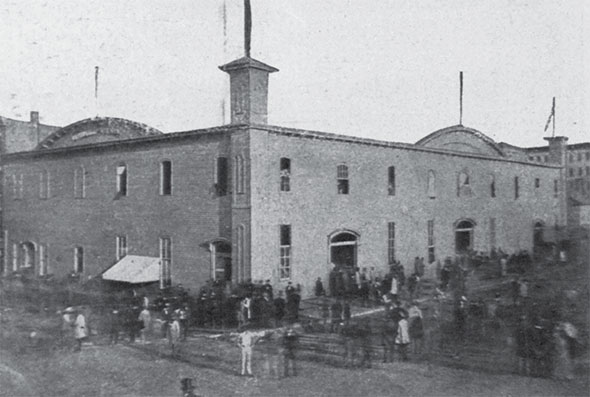
A rare photograph shows the wooden frame “Wigwam” building designed and constructed for the 1860 Republican Convention in Chicago. The two top candidates were Abraham Lincoln and William Seward. Lincoln knew he could not win on the first ballot, so his strategy was to get the second most votes on the first ballot and build momentum. Lincoln’s men left no detail unattended. They made certain that Seward’s New Yorkers were seated far from other critical delegations with whom they might collaborate. They printed hundreds of counterfeit tickets and distributed them to Lincoln supporters with instructions to show up early — in order to displace Seward’s supporters. Finally, the third day arrived. One thousand Seward men marched behind a brass band. They wound their way noisily through Chicago’s streets and finally arrived, triumphantly, in front of the Wigwam. To their horror, they found that they could not get in. The Lincoln men, admitted with their counterfeit tickets, had taken their seats. On the third ballot, Lincoln emerged with enough delegates to be named the party’s nominee. When he became president, Lincoln named most of his former opponents to cabinet positions. Seward became secretary of state, Simon Cameron the secretary of war, Salmon P. Chase the secretary of the treasury, and Edwin Bates the attorney general. (Source: GreatAmericanHistory.net)
Was the Fix In?
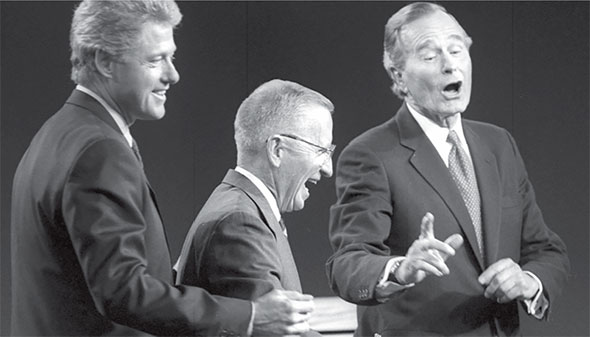
Few people know today that billionaire Ross Perot had such a dislike for the Bush family that he ran as an independent to ensure George H.W. Bush lost and Bill Clinton won the presidential election of 1992. “I think he was driven by a personal dislike, a personal resentment of me, you might say,” Bush Sr. said in an exclusive clip from “The Presidents’ Gatekeepers,” a two-part Discovery Channel documentary.
Clint Lacy is a freelance author and historian based in Missouri. He is also the author of Blood in the Ozarks: Union War Crimes Against Civilians and Southern Civilians in Occupied Missouri, a 171-page softcover book detailing the Wilson Christmas Day Massacre ($17, item #725, foreword by Prof. Ray Goodwin). Available from TBR, 16000 Trade Zone Ave., Unit 406, Upper Marlboro, MD 20774.
Victor Thorn is a freelance investigative reporter and the author of over two dozen books and special reports. He is the author of The Holocaust Hoax Exposed (softcover, 186 pages, #609, $20), also from TBR. See form at back of this issue to order.

